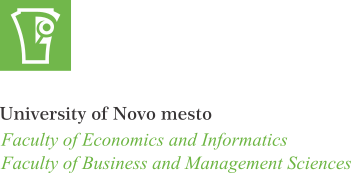A Learning Organization and its Competitive Advantage
Abstract
Competition is a constant in a market economy, but changes depending on the industry as the market for some industries has more competitors and is therefore not monopolistic. Competitive companies are always working to achieve greater business results. Their development and innovation play an important role in introducing something new and different, something that other companies on the market do not offer. At the same time, employees creating company products or performing services and activities must also develop in order to achieve profits and business success. They have a certain knowledge to fulfil the current needs of the workflow, but as it develops and improves, their knowledge must also be improved and upgraded. In order to develop and innovate in present-day economy, companies have to employ highly educated people. A learning organization within the company allows employees to attain this level of knowledge and transfer it to others, thus contributing to a developed business environment. This represents one of the key factors for the company’s competitive advantage on the market, because its employees are successful and effective. The company’s intellectual capital grows and, consequently, so does the financial capital. Theoretical facts and research performed on learning organizations and competitiveness support the fact that a learning organization has a competitive advantage. Hence, the characteristics of a learning organization represent the company’s competitive advantage on the economic market.
References
Dimovski, V. in sod. (2013). Napredni management. Ljubljana: Ekonomska fakulteta.
Dimovski, V. in sod. (2014). Temelji managementa in organizacije. Ljubljana: Ekonomska fakulteta.
Edmondson, A. and Saxberg, B. (2017). Putting lifelong learning on the CEO Agenda. Pridobljeno dne 3. 3. 2019 s svetovnega spleta: https://www.mckinsey.com/business-functions/organization/our-insights/putting-lifelong-learning-on-the-ceo-agenda.
Goronja, D. (2009). Konceptualni model učeče se organizacije model Future-O. V: Goronja, D. (ur.). Znanje: teorija in praksa. Koper, Celje, Škofja Loka: Fakulteta za management, str. 215–221. Pridobljeno dne 5. 3. 2019 s svetovnega spleta: http://www.fm-kp.si/zalozba/ISBN/978-961-266-033-8/prispevki/Goronja%20Daliborka.pdf.
Ivanko, Š. (2015). Teorija organizacije. Ljubljana: Fakulteta za upravo.
Kohont, A. (2011). Vloge in kompetence menedžerjev človeških virov v kontekstu internacionalizacije. Ljubljana: Fakulteta za družbene vede.
Korelc, T. (2009). Revolucija z inovativnostjo do uspeha. Šenčur: Creatoor.
Majcen, M. (2009). Management kompetenc. Ljubljana: GV Založba.
Marič, M. in sod. (2013). Human Resources Annual Interview as a Part of Authentic Leadership. Organizacija, 46, str. 55–63.
Pibernik, N. (2010). Ravnanje z znanjem v podjetju. V: Pibernik, N. (ur.). Znanje: teorija in praksa. Koper, Celje, Škofja Loka: Fakulteta za management, str. 107–113. Pridobljeno dne 28. 2. 2019 s svetovnega spleta: http://www.fm-kp.si/en/zalozba/ISBN/978-961-266-122-9/prispevki/010.pdf.
Roos, J. in sod. (2000). Intelektualni kapital. Ljubljana: Inštitut za intelektualni kapital.
Smrekar, E. (2011). Manager kot coach. HRM: strokovna revija za ravnanje z ljudmi pri delu, str. 20–22.
Svetlik I. and Zupan N. (2011). Menedžment človeških virov. Ljubljana: Fakulteta za družbene vede.
The Economist, 2017. Lifelong learning is becoming an economic imperative. Pridobljeno dne 4. 3. 2019 s svetovnega spleta: https://www.economist.com/special-report/2017/01/12/lifelonglearning-is-becoming-an-economic-imperative.
Weiler, R. (2018). Lifelong learning: A Necessity in the Knowledge Society. Eruditio: e-Journal of the world Academy of Art & Science. Pridobljeno dne 3. 3. 2019 s svetovnega spleta: http://eruditio.worldacademy.org/volume-2/issue-4/article/lifelong-learning-necessity-knowledge-society.
Downloads
Published
How to Cite
Issue
Section
License
Copyright (c) 2022 Journal of Economic and Business Sciences

This work is licensed under a Creative Commons Attribution 4.0 International License.




